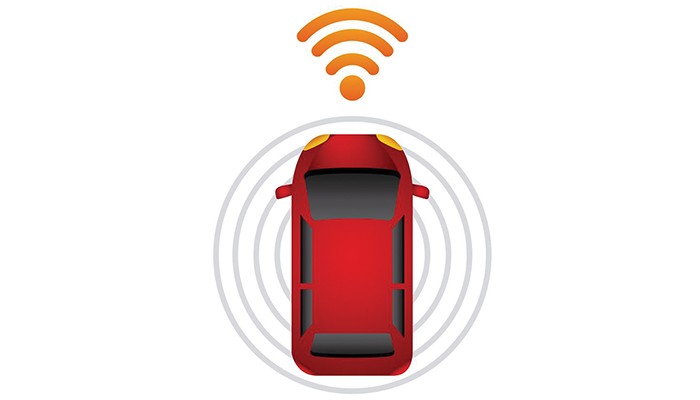All
Making Driverless Vehicles Safe
by Ed Burke, Dennis K. Burke Inc.

As automakers prepare to deploy their self-driving vehicles, the big question is how we ensure that these vehicles are safe enough to share the roads. Industry is pushing Congress for federal regulations and standards to find the answers.
In February, the chairman of the Senate Commerce, Science and Transportation Committee announced that the panel was working on a bipartisan effort to remove hurdles and speed up deployment of autonomous vehicles (AVs).
The following day, the House Energy and Commerce Subcommittee on Digital Commerce and Consumer Protection held a panel hearing on self-driving vehicles and possible legislation that would prioritize safety concerns while moving the technology along faster.
Setting safety as a priority, stakeholders from General Motors, Toyota, Volvo, Lyft and the RAND Center gave testimony about what testing is happening, what needs to happen, and their timeline for AV deployment. The members and panelists discussed the life-changing impact that AVs (also referred to as “mobility”) will have on people with disabilities who are unable to drive a car, or the elderly who can no longer drive.
The automakers explained their ongoing efforts in developing self-driving cars and fielded questions on several topics including safety, cybersecurity, and their hopes for updated rules and regulations from the National Highway Traffic Safety Administration (NHTSA). Last year the agency issued guidelines as a voluntary set of safety goals for automakers to meet.
Automakers are concerned that states are moving ahead with their own regulations, creating a patchwork of laws that are hindering the deployment of self-driving cars. They also don’t want to see the federal government picking winners and losers by dictating what type of technology they should be using in their self-driving cars.
How Safe Is Safe Enough?
Road experience, fleet data collection, and vehicle updates give AVs the ability to learn how to best handle road conditions and traffic hazards. In short, they’re always learning and improving safety performance. But how safe will they actually be when they’re introduced to consumers?
Safety advocates are urging Congress to set standards that specifically address the safety of self-driving cars. Proponents believe traffic deaths could be dramatically reduced by eliminating human error, which is a factor in 94 percent of all fatal crashes, according to the NHTSA. More than 35,000 people were killed on our nation’s roads in 2015, up over 7 percent from the previous year. Traffic deaths increased 8 percent in the first nine months of 2016.
“We want AVs as safe as possible, as quickly as possible,” said Dr. Nidhi Kaira, a Senior Information Scientist for the RAND Center. She noted that public crashes pose a crisis in the United States, and autonomous vehicles can help.
She pointed out that they probably won’t eliminate all crashes and may even create new safety risks, particularly in the near term.
The first challenge is that there isn’t yet a practical way to prove AVs are safe before they’re allowed on the road for consumer use.
The second challenge is that there’s no consensus how safe they should be before they’re allowed on the roads. We know neither which tests AVs should have to take nor what would be a passing grade. Solving this is urgent because real-world driving experience is crucial for proving autonomous safety.
This presents a third risk. Learning in real-world settings presents risks for early adopters that benefit later adopters. It’s like allowing teenage drivers on the road. They may not be safe drivers yet, but they need good experience to become safe drivers. In the meantime, they pose risks to themselves and others. We try to limit risk with age restrictions and permit restriction, and we may need that for autonomous vehicles in their “teenage years.”
Dr. Kaira also offered recommendations on creating a framework of safety standards and regulations. First, we need to rapidly develop practical methods of testing AV safety. These methods can be developed by industry, researchers, academics or federal regulators. Wherever they come from, they need to be vetted rigorously, objectively and independently. It’s not enough for testing methods to exist.
We should also develop an adaptable framework that recommends what level of safety performance AVs need to meet before being on the roads. A lower level of safety would be okay for demonstration projects in some environments, but a higher level may be needed for uncontrolled environments. Some states have already released rules for AVs, but they don’t specify testing requirements or develop such a framework.
Regulatory framework will take time. Pilot studies could start with real-world testing in controlled conditions like operating in well-maintained areas and climates, and expand as safety is demonstrated. If a crash does occur, risks can be lowered by limiting vehicle speed or ensuring that all passengers buckle up.
Developers already use the experience of a single vehicle in their fleet to improve the performance of the entire fleet. Deploying AVs could go faster if some of the useful data could be shared across the industry.
It may take a while before people warm up to the idea of riding in or even sharing the road with self-driving cars, but the technology really is pretty amazing.
Related Posts
 100 Years of Helping Fuel Retailers Deliver!
100 Years of Helping Fuel Retailers Deliver!
Posted on August 18, 2025
 U.S. Competing to Secure Critical Minerals
U.S. Competing to Secure Critical Minerals
Posted on June 16, 2025
 The Clean Air Act, the EPA, and State Regulations
The Clean Air Act, the EPA, and State Regulations
Posted on May 14, 2025
 Day Tanks Support Back-up Generators in Extreme Conditions
Day Tanks Support Back-up Generators in Extreme Conditions
Posted on March 10, 2025
Enter your email to receive important news and article updates.
